Peace Lily Care: How to Grow a Spathiphyllum Plant
Peace Lilies are one of the most popular houseplants and have been so for years. We love their glossy, dark green leaves but most of all the long-lasting white flowers that rise above. This is all about Peace Lily care and how to keep your looking good.
- Botanical Name: Spathiphyllum. Species & varieties vary
- Common Name: Peace Lily (these aren’t true lilies by the way), Spathe Flower, White Sails Plant
Peace Lily plants can grow outdoors year-round in places with high humidity and mild winter temps like Florida and Hawaii. Spaths (a shortened version of their name) are well-loved houseplants because they’re attractive, easy to find, not expensive, and mostly because of those lily-white flowers.
There are many species and varieties of Peace Lilies – these care tips apply to them all.
Peace Lily Traits
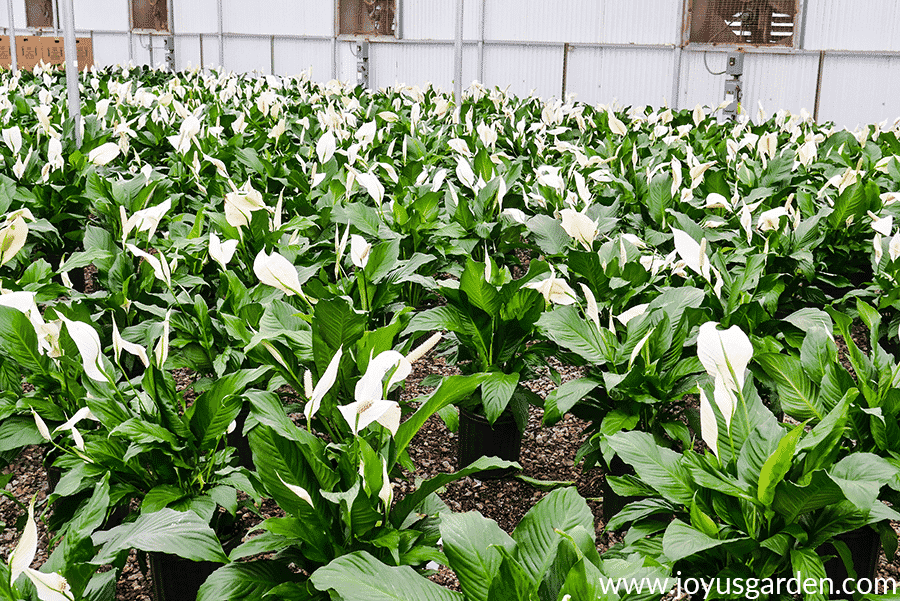

They’re commonly sold in 4″, 6″, and 8″ grow pots. When growing in 10″, 12″, and 14″ grow pot sizes, they’re floor plants. Mine that you see in the photo below is in a 6″ pot and stands about 12″ tall.
There are many species and varieties within the Spathiphyllum genus. Common taller varieties are Mauna Loa (2-3′) and Sensation (5-6′) while Spathiphyllum wallisii is the old tabletop stand-by.
Growth Rate
Peace Lilies are slow to moderate growers. If the light is too low, the growth rate will be slow. It’s spring as I’m writing this and mine is putting out a lot of new growth.
Uses
The most common use for Spaths is as a tabletop plant. The smaller ones (4″ pot size) are often used in dish gardens. The larger growing varieties are low-floor plants. They grow almost as wide as they do tall so you’ll need some space for mature specimens.
The Big Draw
They’re easy to find, the dark green foliage with a bit of shine, and those white flowers.
The majority of Peace Lilies have deep green leaves in various sizes. There are a few varieties, that I know of, which have green and white variegated foliage.
Peace Lily Care & Growing Tips
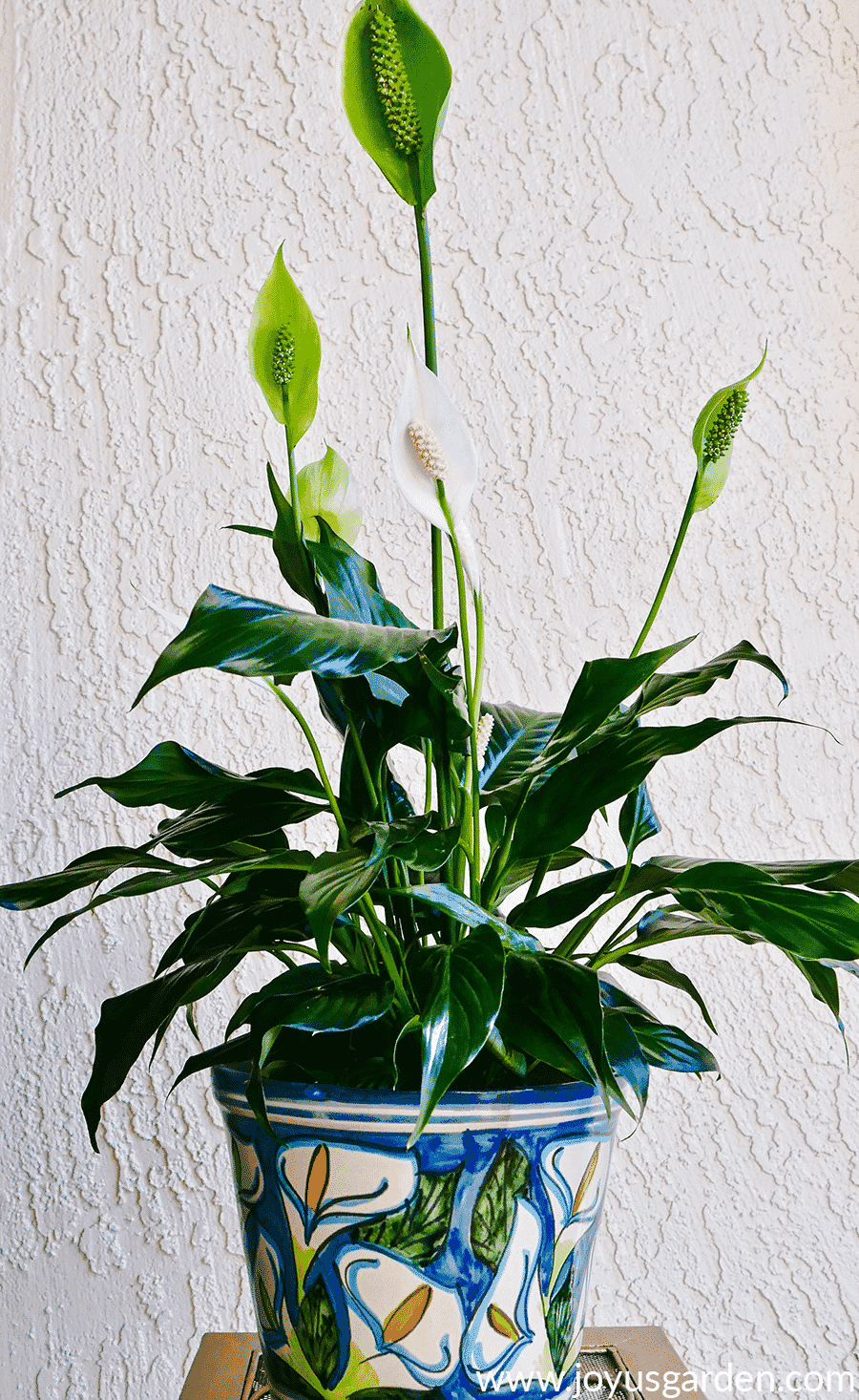
Peace Lily Light Requirement
Peace lilies prefer moderate or medium light. Like many tropical houseplants, indirect sunlight is best.
If the light is too strong (like a hot, west exposure close to a window), your plant will burn. Peace Lilies leaves are thinner than many houseplants so they don’t handle that situation well. Near an east-facing window is fine.
Conversely, Spathiphyllums are often billed as low-light plants but they won’t put out new growth or flower in low light.
Mine grows on a table in my kitchen about 10′ away from east-facing patio doors. There is also a skylight above. It’s very happy in this location and is currently producing seven flowers. It’s placed near but not in a window.
In the cooler, darker winter months you may have to move it to a brighter spot.
Peace Lily Watering
This is one plant that likes regular watering. I let the top 2/3 of the soil dry out before watering again. I try not to let it completely dry out because the leaves and stems will go limp and droop in no time.
The weather is warming here in Tucson so I water mine every five to seven days. It’s in a smaller pot so that’s one reason it’ll dry out faster. In winter I water it every seven to ten days depending on the temps and the light levels.
Your Peace Lily might need watering less often. There are many variables that come into play like the pot size, the type of soil it’s planted in, the location where it’s growing, and your home’s environment. Basically, the more light and warmth, the more often yours will need watering.
If yours goes completely dry two or three times, it’ll be fine. Letting it consistently droop will take its toll on this plant.
I started my horticultural career in Boston as an interior plant technician. The Peace Lily is the plant that we replaced more often than any others (it was very popular!) because of under-watering or over-watering. Inconsistent or improper watering is the reason for a drooping Peace Lily.
Even though this plant doesn’t like to dry out, it doesn’t like to stay sopping wet or sit in a saucer full of water. Having drainage holes at the bottom of the pot and planting in well-drained soil will allow the excess water to freely flow out.
If your tap water is high in chlorine and salts, the leaves will show signs of burn. You may have to switch to distilled or filtered water.
Here in Tucson, the water is hard. I used purified water before I got a tankless R/O system installed in my new home. It has a re-mineralization cartridge that puts the good minerals back in. This is what I use to water all of my indoor plants.
I always use room-temperature water when watering my plants.
Back off on the frequency in the winter. The light levels and temps tend to be lower. More on Winter Houseplant Care here.
How often you water your beautiful plant depends on how warm your home is, pot size, type of pot, etc. I’ve done a Watering Indoor Plants Guide which will help you out.
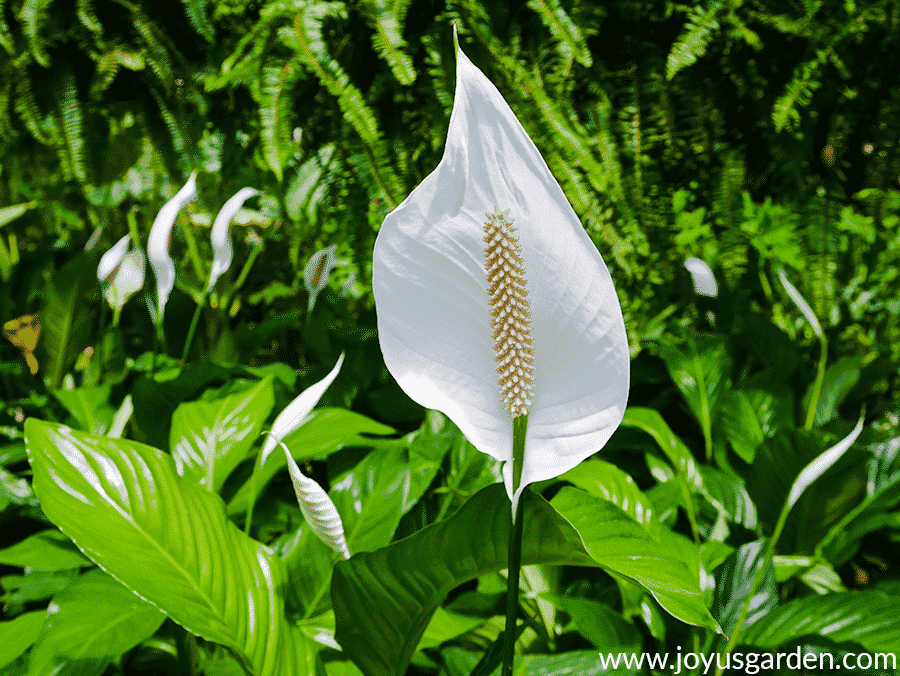
Temperature
They prefer warmer temps. If your home is comfortable for you, it’ll be so for your houseplants too. Just be sure to keep your Peace Lilies away from any cold drafts as well as air conditioning or heating vents.
Humidity
Spathiphyllums are native to damp rainforest regions. If yours is showing brown leaf tips, that’s a reaction to the dry air in our homes. Here in hot dry Tucson, mine have tiny brown tips but you have to look closely to see them.
I have a humidity meter in my dining room. I run my humidifiers when the humidity reads low, which is often here in the Arizona desert!
I have a large, deep kitchen sink and once every month or so put my spath in it and spray the foliage. I avoid spraying the flowers – more on them towards the end.
If you think yours look stressed due to lack of humidity, fill the saucer with pebbles and water. Put the plant on the pebbles but make sure the drain holes and/or the bottom of the pot aren’t submerged in water.
Misting a few times a week should help out too.
Do you have a lot of tropical plants? We have a whole guide on Plant Humidity that might interest you.
Peace Lily Fertilizing/Feeding
I live in Tucson, AZ. We have a long growing season here in the Sonoran Desert from mid-February through October. I fertilize with Maxsea or Sea Grow, Grow Big, Liquid Kelp seven times during the growing season. I alternate using these liquid fertilizers and don’t mix them all together.
When my plants are putting new growth, it’s the sign to start feeding. For you in a different climate zone with a shorter season, you’ll start later. Feeding two or three times per year with a houseplant fertilizer may be enough for your plants.
Feeding your spaths too often or with too great a ratio of fertilizer can cause salt build up and eventually burn the roots of the plant. This will show up as brown spots on the leaves. If you fertilize more than three times a year, you can try using the fertilizer at half-strength. The label on the jar or bottle will guide you.
It’s best to avoid fertilizing a houseplant that is stressed, ie. bone dry or soaking wet.
Every other spring, I give the majority of my houseplants a light application of worm compost with a light layer of compost over that. Easy does it – a 1/4 ” layer of each is enough for a 6″ size houseplant. It’s strong and breaks down slowly.
Be sure to check out our Guide To Fertilizing Indoor Plants for lots more info.
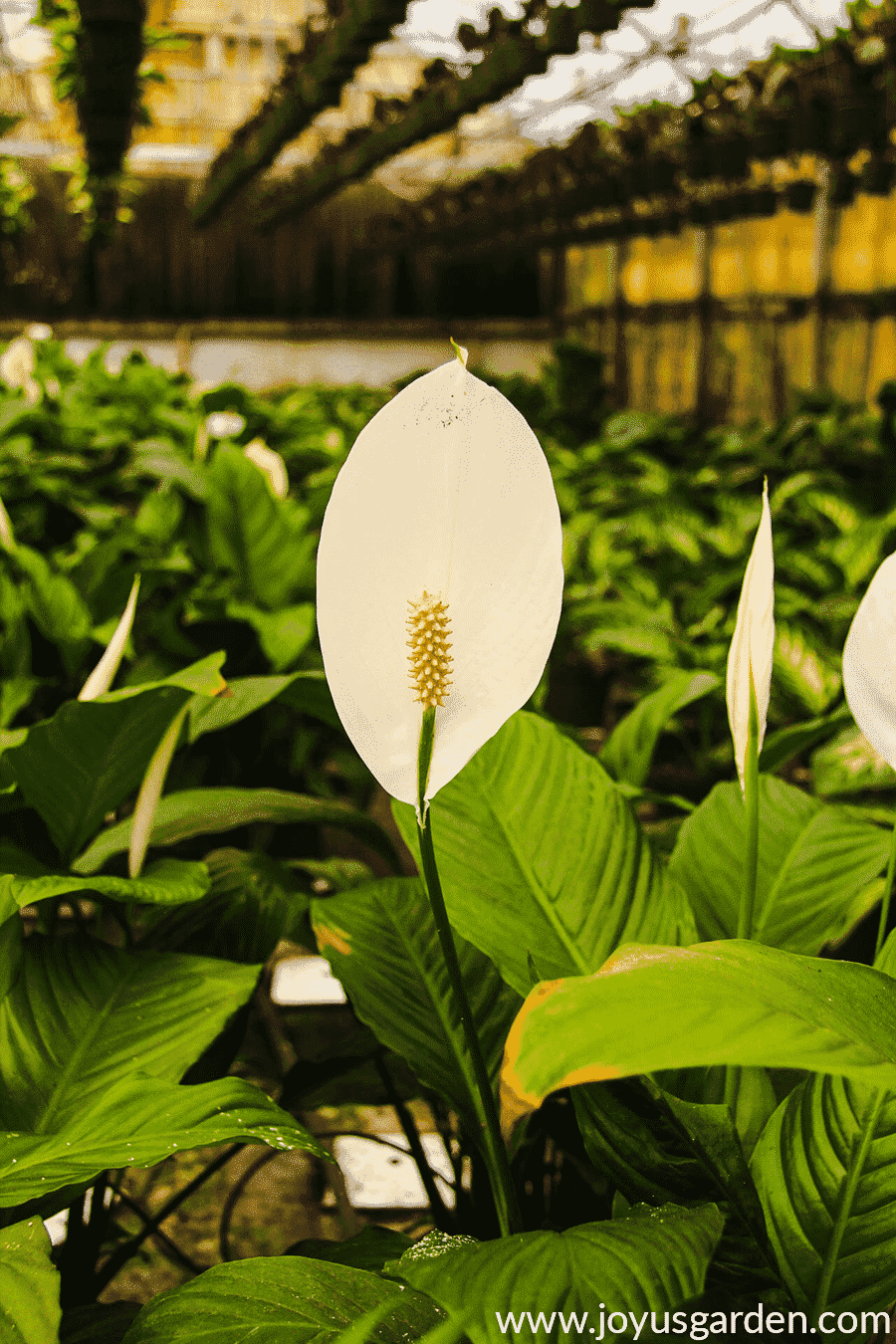
Peace Lily Soil
I use potting soil formulated for houseplants when repotting this plant. My choices are Happy Frog and Ocean Forest because of their variety of high-quality ingredients. Sometimes I alternate using them and sometimes mix them together.
The potting mix I use for Peace Lilies is 1 part potting soil to 1 part DIY Succulent & Cactus Mix. Soil too heavy will lead to root rot so I add in the chunky succulent mix to enable drainage and aeration.
I also mix in a few handfuls of organic compost and worm compost. These enrich the soil naturally.
You may not need or want to make your own succulent mix (I have a lot of succulents and cacti indoors and out!). If you feel your potting soil is too heavy, you can also add in perlite or pumice to make it lighter and more aerated.
Repotting/Transplanting
This is best done in spring or summer; early fall is fine if you’re in a warmer climate. The faster your plant is growing, the sooner it’ll need repotting.
Repotting your Peace Lily every 3-5 years will be fine. It isn’t a fast grower and doesn’t mind growing with the root ball slightly tight in the pot.
I go up one pot size; for instance, from a 4″ to a 6″ pot, or a 6″ to an 8″ pot. Make sure the pot has at least one drain hole so the water can freely flow out the bottom.
I’ve also done a Beginner’s Guide To Repotting Plants which you’ll find helpful, especially if you’re new to the world of houseplant gardening.
Propagation
The only way I’ve propagated this plant is by division. My 6″ Peace Lily that you see here in the blue calla pot could easily be divided into two plants.
You can also do it by seed. Many of the growers propagate via the tissue culture method.
Pruning
Not much pruning is needed. The main reasons to prune this plant are to take off the occasional yellow leaf, dead leaf, or spent flower.
Just make sure your pruners are clean and sharp before you do any pruning.
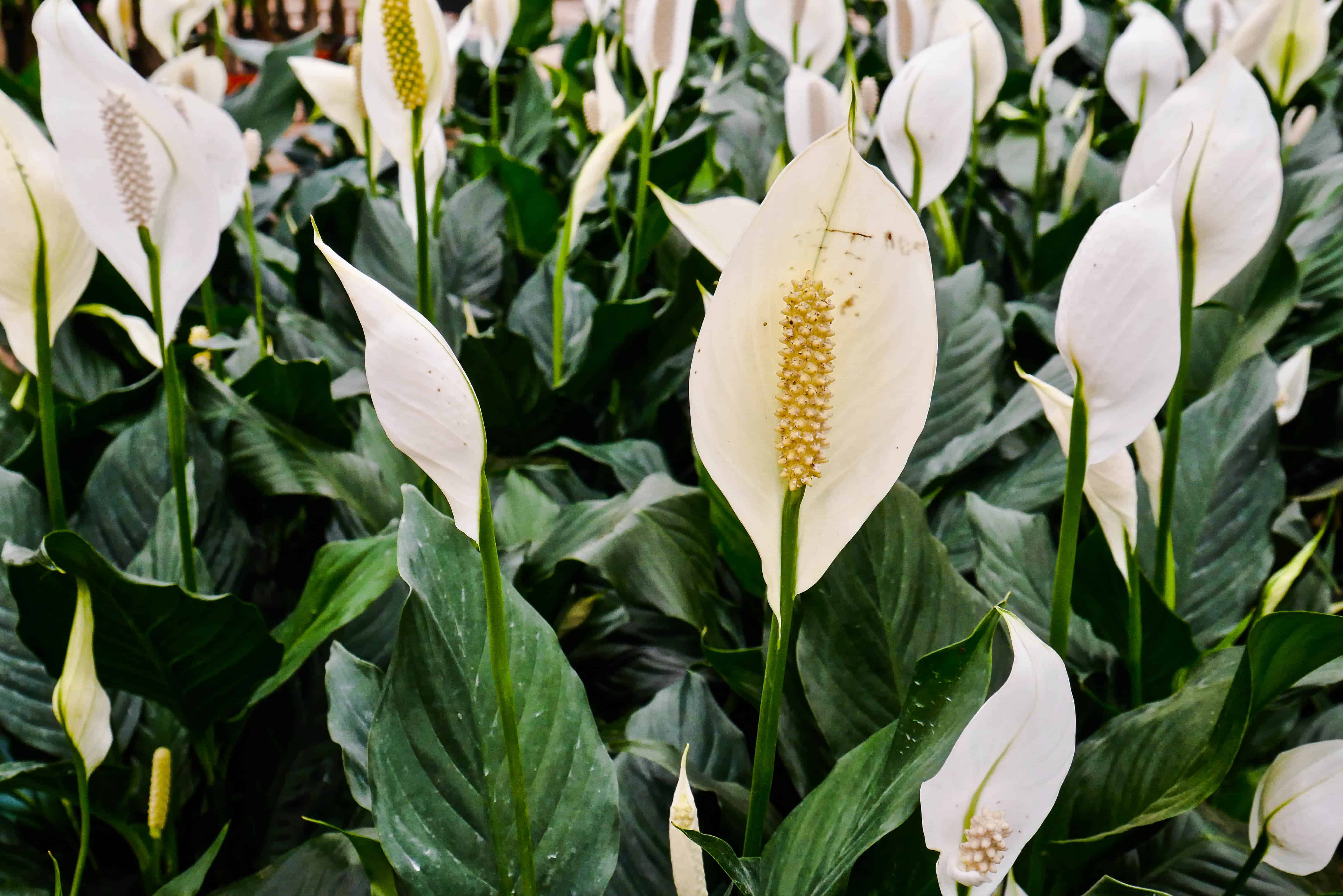
Pests
Peace Lilies can be susceptible to mealybugs, especially deep inside the new growth. These white, cotton-like pests like to hang out in the nodes and under the leaves.
I simply blast them off (lightly!) in the kitchen sink with the spray and that does the trick. For a heavier infestation, click on the link in the above paragraph for treatment options.
Also, keep your eye out for scale and spider mites. It’s best to take action as soon as you see any pest because multiply like crazy.
Pests can travel from houseplant to houseplant fast so make you get them under control pronto.
Toxicity
Peace Lilies are considered to be toxic to pets. I consult the ASPCA website for my info on this subject and see in what way the plant is toxic. Here’s more info on this for you.
Peace Lily Air Purifying
This is a big topic as far as Spathiphyllums are concerned. They are billed as being air-purifying wonders. All plants benefit the air in some way. However, you can’t expect a Spath or two to clean your whole living room.
You know I love plants, both indoors and out. But, the NASA study was done in a controlled chamber; our homes aren’t controlled chambers. Here are my thoughts on how well houseplants clean the air.
Cleaning The Foliage
Oh yes, all plants breathe through their leaves and like to be clean. Plus, the beautiful dark green leaves of a Peace Lily look so much better clean!
They have natural glossy leaves and don’t need any kind of commercial leaf shine. It blocks their pores and hinders the respiration process.
I cleaned mine right before this writing this post so it was nice and pretty for you. Here’s How & Why I Clean Indoor Plants.
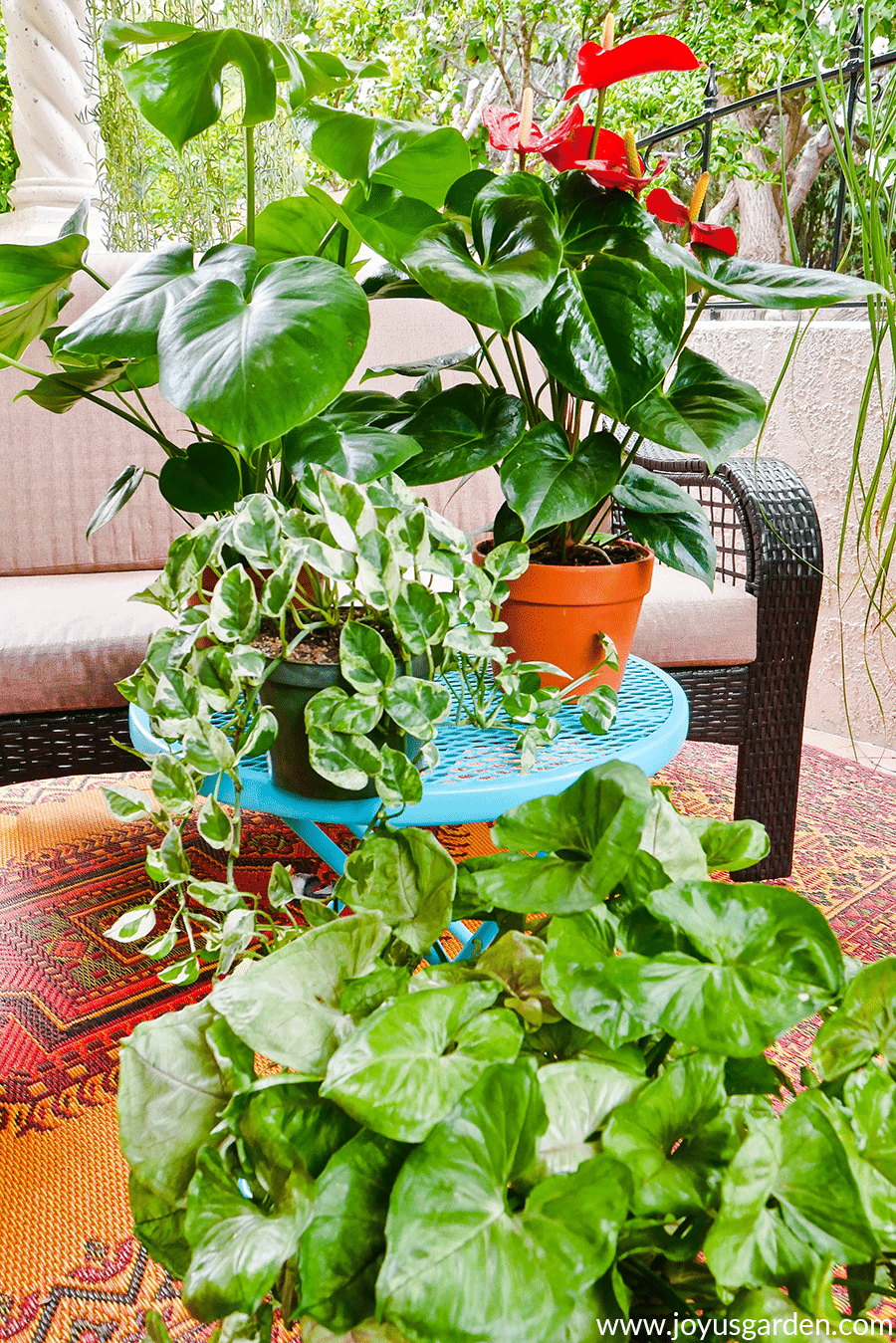
Peace Lily Flowers
Oh yes, we all love those lily-white flowers! Each one lasts 3 – 8 weeks, depending on how warm and bright your home is.
The white part is the spathe and the flowers are tiny and found on the center spadix. Technicalities aside, the whole thing is called the flower.
Mine usually starts to set blooms at the end of winter and they start to open in spring. Their natural cycle is to flower anytime from late winter to early summer. The growers time them to be in bloom at all times of the year so they’re flowering when for sale.
- Flowers start turning green: it means they’re on their way out. They stay green for a while so I leave them on until they start turning brown and look bad.
- Where to deadhead a Peace Lily flower: the flower stem grows inside the leaf stem. Go as far down the flower stem as you can into the leaf stem and cut there.
- If you see white powder on leaves: that’s the pollen falling off the spadix.
- Peace Lily not flowering: it isn’t getting enough bright light and/or isn’t growing in ideal conditions.
Problems With Peace Lily Leaves
Leaves turning brown or yellow is an issue Peace Lilies are known for. It’s usually a watering, drainage, or light issue but other things can come into play too.
Below are symptoms I’ve had experience with. Just know there may be other causes depending on the environment your plant is growing in, how you’re caring for it, the soil and pots it’s planted in, etc.
- Peace Lily yellow leaves: Usually due to low light levels, not enough water, or poor drainage.
- Brown tips: The most common reason for the small tips is a reaction to the dry air. This plant loves humid climates.
- Brown edges & bigger brown tips: Too many minerals in your water, over or under-watering-watering, using too much fertilizer, and/or fertilizing too often.
- Brown leaves: The plant repeatedly goes completely dry (the leaves will feel dry), over-watering (the leaves will feel mushy), or cold damage.
- Scorched/Pale leaves: Sunburn.
- Peace Lily drooping: this is a watering issue, usually when the plant dries out. Many plants go dry and they don’t wilt right away. This one does major droop!
Peace Lily Care Video Guide
Peace Lily Care FAQs
Place it in a spot with it receives bright indirect light from windows. If it gets too much sunlight (direct), it’ll burn. Conversely, if you want it to rebloom, you’ll have a better chance of that happening in a brighter location.
You can cut the tips off your Peace Lily leaves if you please. I prefer not to because the leaves are dark and the tips are dark. I don’t like the look of cut plant leaves because they leave a funny edge, but it’s up to you!
It’s hard to tell you because there are so many variables that come into play: your home’s environment, where it’s growing, the pot size, the composition of the soil, and the time of year. You’ll probably have to water more in the summer months and less in the winter months.
Yes, you can overwater any plant. Even though a Peace Lily plant likes slightly moist soil, you can kill it by watering too often or keeping the saucer full of water.
Here are a couple of reasons: This is one plant that likes consistent moisture levels so going dry too often can cause this. These are tropical plants so the low humidity in our homes can affect them.
Other reasons are too many minerals in the water, cold damage, watering too often, and sunburn (the leaves will scorch and turn pale, then brown).
They can be easy to care for but … it’s hard to get the watering right, and they really appreciate higher humidity levels. Mine growing here in the desert doesn’t look as happy as when it was in the greenhouse. They’re very popular houseplants and you may have a totally different experience. Give one a try!
Here are some of our houseplant guides you may find helpful: 6 Low Maintenance Plants For Travelers, 11 Pet Friendly Houseplants, Tips For Buying Houseplants, Best Low Light Indoor Plants, Easy Care Office Plants, 7 Easy Care Floor Plants, 7 Easy Tabletop & Hanging Plants
Note: This post was originally published on 5/15/2019. It was updated on 3/24/2023 with more information.
If you don’t have one of these lovely plants already, then maybe it’s time. Just remember, don’t let your Peace Lily go completely dry, and keep it out of hot sunny windows. You’re going to love those flowers!
Happy gardening,


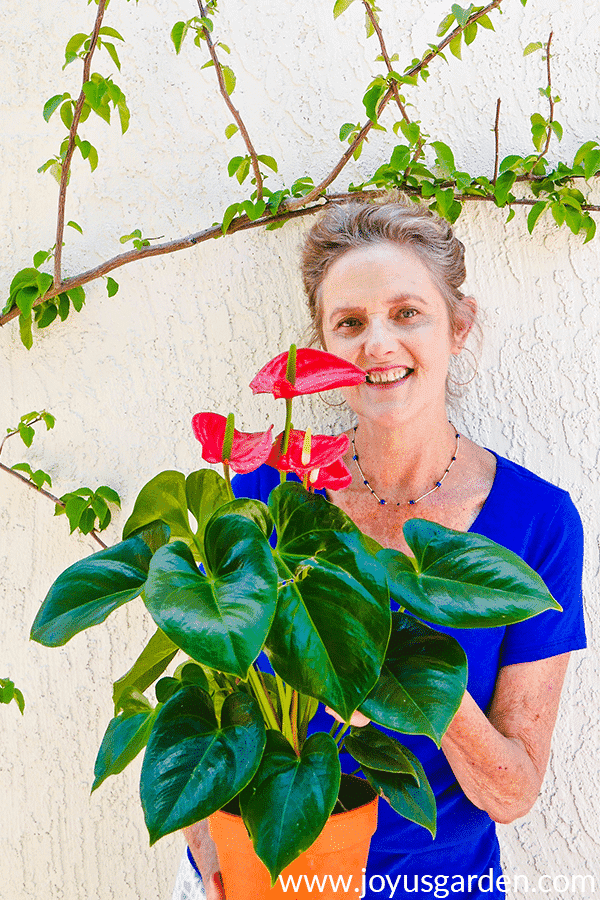

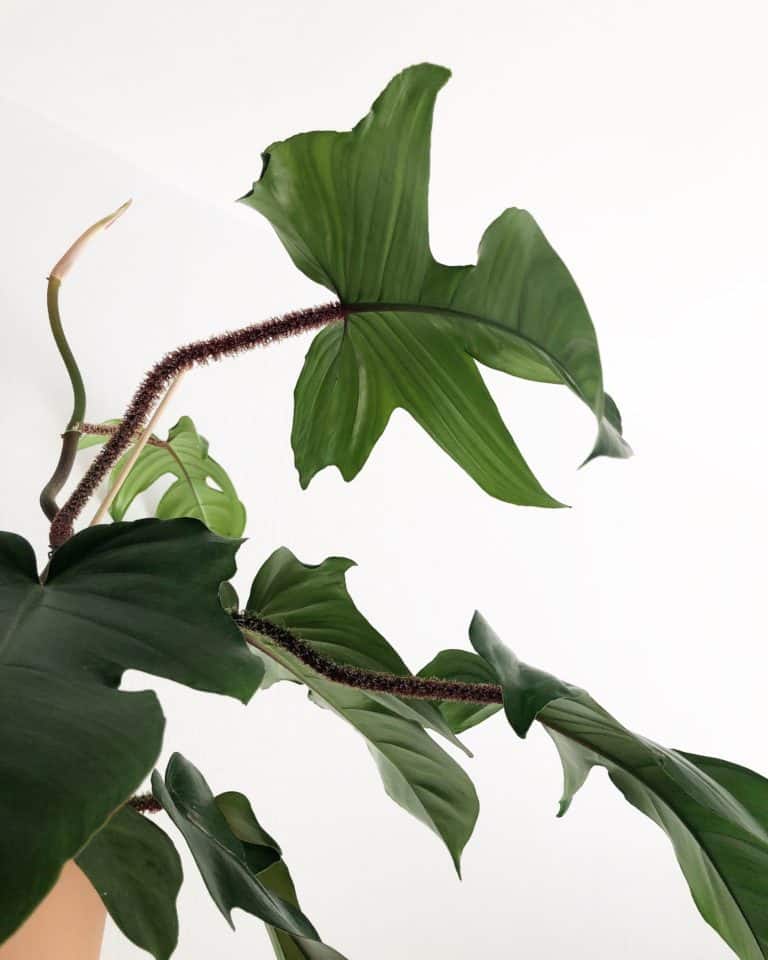
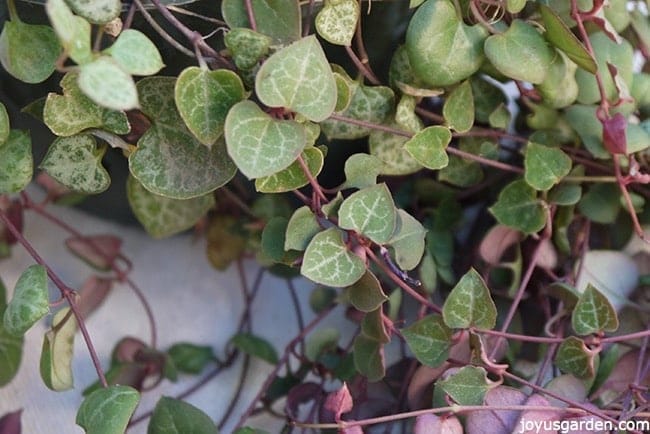

Love all your posts on house plants! Very detailed and filled with valuable information!
Gene – I try to cover everything I’ve learned & share in a clear, concise manner. I love houseplants & there are many more hp posts on the way! Nell
I love your advise and tips. Thank you for sharing your knowledge.
Sue – I’m very happy to share. Thank you for reading! Nell